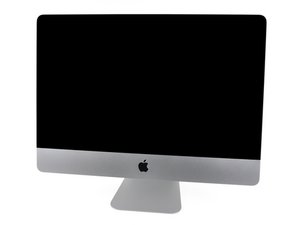phospholipid, check these things out first:"
Intermittent Shutdown
Troubleshooting Shutdown Causes
Always run the latest Apple service utilities to check for any abnormal value reading from
a thermal, a voltage, or a current sensor, or from a fan speed meter. The log files may also
report the cause of a previous shut down(s). Collect all available info from user on shut down
occurrence details: periodicity, power state when issue happens, running applications, running
time before shutdown. Shutdown events have four different types of causes:
1. User-related shut downs:
A computer shut down event may be caused by user operation. Shuttting down the computer
(by selecting the Shutdown menu, by keeping pressed the Power button for at least 4 seconds,
or by programming a timed shutdown in the Energy Saver preferences) should not be
considered as a failure unless power button is defective. Suggested steps for troubleshooting:
• reset the SMC,
• check energy saver preferences settings,
• test the Power On button for a intermittent shorting issue (which would force down the
computer.).
2. Activity-related system shut downs:
The system could not succeed the standard shutdown process and had to force shutdown, or
an installed watchdog detected that an application did not respond within specified time (this
watchdog can be enabled on Mac O X Server Energy Saver preferences). These shut downs
may be linked to system settings, devices drivers, applications or operating system freezes.
Suggested steps for troubleshooting:
• check the system logs and activity monitor utility for clues on the freezing process,
• check for available software and firmware updates for installed device drivers, applications,
or operating system,
• start the system from a known-good and up-to-date bootable drive for issue reproduction.
3. Power-related system shut downs:
External power source was removed. These shut downs are due to power management,
excessive thermal/voltage/current status, poor connections or defective power sources.
Suggested steps for troubleshooting:
• reset the SMC
• check secure AC cable, AC inlet and Power Supply board connections to logic board,
4.Hardware-related system shut downs:
One of the temperature, voltage or current sensors reached a specified limit. These shut downs
are due to temperature, voltage, current, fan speed or other hardware related sensor values
getting out of range. Suggested steps for troubleshooting:
• check for all sensors connections and values using Macintosh Resource Inspector and locate
sensors using the sensors table of the General Troubleshooting chapter,
• check for fan(s) operation,
• check for cleanliness of the heatsink fins and the air flows,
• check for correct seating of the heatsink on logic board and presence of thermal material.
Check Result Action Code
1. Activity related shutdowns:
Reset SMC and PRAM and verify that shutdown issue still happens.
Yes Check with known-good bootable drive. Go to step 2.
No Shutdown cause was related to SMC or pRAM programmed shutdown settings or corruption, and was resolved by reverting them to default settings.
2. Booting from known-good bootable drive , verify that shutdown issue still happens.
Yes Go to step 3.
No Shutdown events do not happen on known-good OS. Reinstall Mac OS on user hard drive, update OS with latest version and check if any firmware update is available.
3. Power related shutdowns:
With known-good AC power cord and AC outlet, Verify if system continues to restart or shutdown
Yes Go to step 4.
No AC power cord / outlet issue.
Issue resolved.
4. Disconnect hard drive power cable from hard drive and startup the computer from other bootable media (like Install DVD, a same model computer in Target Disk Mode, or a compatible known-good OS on an external drive). Verify if system continues to restart or shutdown.
Yes Go to step 5.
No Possible bad software or hard drive. Go to Hard Drive Not Recognized.
5. Inspect and reseat AC inlet connection to power supply (the smaller of the 2 cables connected to power supply), and DC power cable from power supply to logic board. Verify if damage is observed on
the cables or connectors.
Yes Replace damaged cable.
Retest. Return to step 1 if problem continues.
No Go to step 6.
6. Install known-good power supply. Verify if system continues to restart or shutdown.
Yes Reinstall original power supply. Go to step 7.
No Issue resolved with power supply replacement.
7. Replace DC power cable, which supplies power to logic board, hard drive, and LED backlight board. Verify if system continues to restart or shutdown.
Yes Go to step 8.
No Issue resolved with DC power cable replacement.
8. Hardware-related shutdowns:
Run latest available Apple service diagnostics and verify if a sensor failure is reported.
Yes -If a temperature or a fan sensor failure is reported, go to step 9.
-If a voltage or a current sensor failure is reported test with known-good power supply board. If issue persists, replace logic board.
No Setup ASD to loop test suite for burn in tests and go to step 9. If no failure is found after burn in tests, return unit to user for no failure found.
9. Verify if a thermal sensor or fan failure is reported by diagnostics.
Yes -If fan not running failure, check for fan cable seating and retest. If same failure after retest replace fan with known-good fan and retest.
If issue does not happen with known-good fan, replace user’s fan.
-If an over temp failure reported, check for cause of over temp, like obstructed vent, dust in heatsink fin, clogged fan and retest. If still failing replace part where sensor is located (logic board, power supply, hard drive or sensor cable) according to the sensor location table in General Troubleshooting
chapter. Go to step 10.
No Go to step 10.
10. Isolate if issue solved
Verify if shutdown/issue does is fixed.
Yes Issue resolved.
No Replace logic board with corresponding symptom:
-if for thermal error cause
-if for other cause

 1
1 
 893
893  2,3k
2,3k
1 Opmerking
Reluctantly bumping...
Thanks, all.
door phospholipid